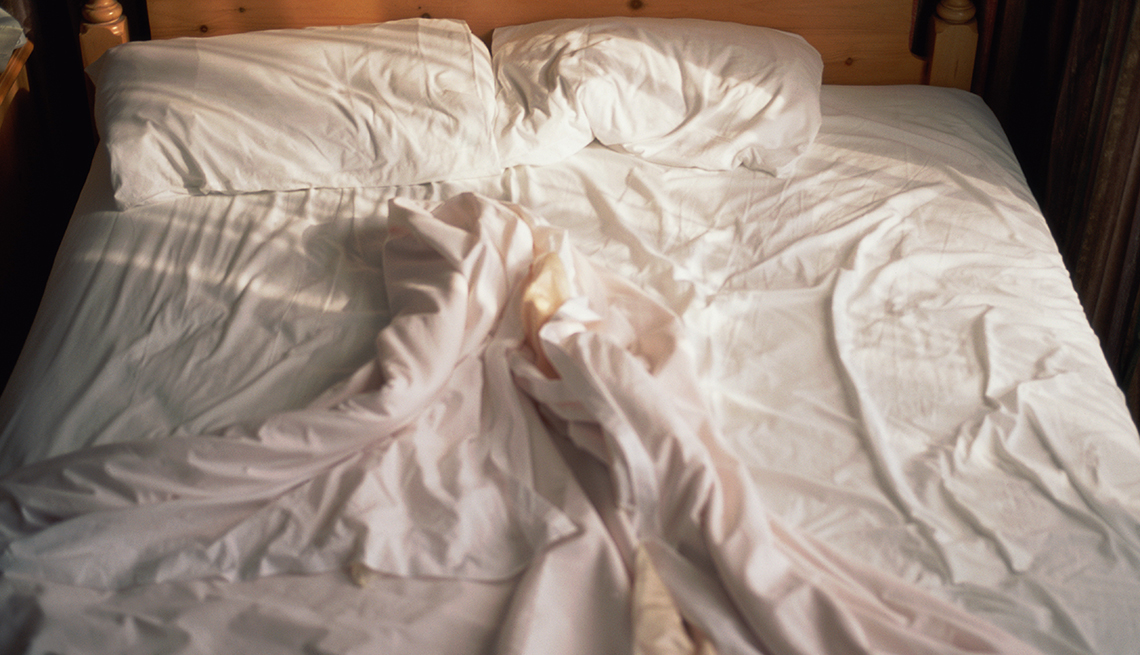Staying Fit
Back in 2005, lazy people everywhere thought they had reason to rejoice. A British study suggested that not making your bed every morning could help reduce your allergy and asthma symptoms by getting rid of dust mites. But since then, there's been little research to back up this finding, and some other allergy experts question this theory.
Dust mites feed on dead human skin and produce allergens that we inhale as we sleep. Researchers at London-based Kingston University found that the bugs thrive in warm, moist environments but die in dry surroundings. They stated that by making your bed every morning, you could be cultivating a humid habitat for the bugs. In theory, they said, leaving your blankets and sheets off could help kill them, leading to fewer asthma and allergy triggers.


AARP Membership— $12 for your first year when you sign up for Automatic Renewal
Get instant access to members-only products and hundreds of discounts, a free second membership, and a subscription to AARP the Magazine.
"We know that mites can only survive by taking in water from the atmosphere using small glands on the outside of their body," researcher Stephen Pretlove, Ph.D., said when the study findings were reported. "Something as simple as leaving a bed unmade during the day can remove moisture from the sheets and mattress so the mites will dehydrate and eventually die."
Not all health experts agreed, though, noting that homes are humid enough for dust mites to thrive anyway. “I find it hard to believe that simply not making your bed would have any impact on the overall humidity,” Professor Andrew Wardlaw, then president of the British Society for Allergy and Clinical Immunology, told the BBC.
The study, however, continues to receive sporadic media attention over a decade later, possibly because it fits a convenient narrative for those of us who want to skip a chore during our busy mornings. But there are other much more effective and practical ways to reduce dust mites, according to allergist Myron Zitt, M.D., past president of the American College of Allergy, Asthma and Immunology.
"Most households in the spring and summer have elevated humidity" where mites can thrive, Zitt tells AARP. And not making the bed won't fix this problem.
"When making your bed, you do shake the mites and their fecal matter in the air," Zitt says. "So if you were to do an air test immediately after making the bed, it would show higher levels of dust mites until they settle."
But not making the bed doesn't do anything to eliminate the existing mite population. The average person can have up to 1.5 million dust mites in his or her bed, and they can actually produce two times their weight in fecal matter. Getting the humidity down in your house may help. "If you can get your humidity down below 50 percent — ideally between 35 to 40 percent — that is going to destroy the mite populations."
Use a hygrometer to measure the humidity in your house, and then use a dehumidifier when it gets too high, Zitt recommends. Here are other ways to address dust mites.
- Cover your mattress and pillows with zippered, dust-proof allergen covers. Plastic or vinyl ones work well and are inexpensive, although some people prefer the fabric kind, Zitt notes. Just make sure the covers are allergen impermeable.
- Wash fabric covers, sheets, pillowcases and blankets once a week in hot water, or follow the instructions provided on the manufacturer's label.
- Vacuuming your mattress is not effective for killing mites, but it will remove some of the fecal matter. Zitt recommends vacuums with a high-efficiency air filter and bags that offer micro filtration .
- Keep pets out of the bedroom.
- Avoid thick carpeting when possible. "You are better off with wood or hard floors with a throw rug that you can wash regularly," Zitt says.
- Get filters for your furnace and air conditioner with a minimum efficiency reporting value rating of 11 or 12.
- People who suffer from allergies should wear an N95 filter mask while cleaning to avoid having a reaction.
Up to 50 percent of people are allergic to dust mites, and while avoidance is the best remedy, those who are still suffering should see a board-certified allergist, Zitt says. Immunotherapy or allergy shots are available.
Unfortunately, it seems that not making your bed is not the cure-all for dust mites. The lazy among us may have to return to the ran-out-of-time excuse for not tackling this chore.


































































